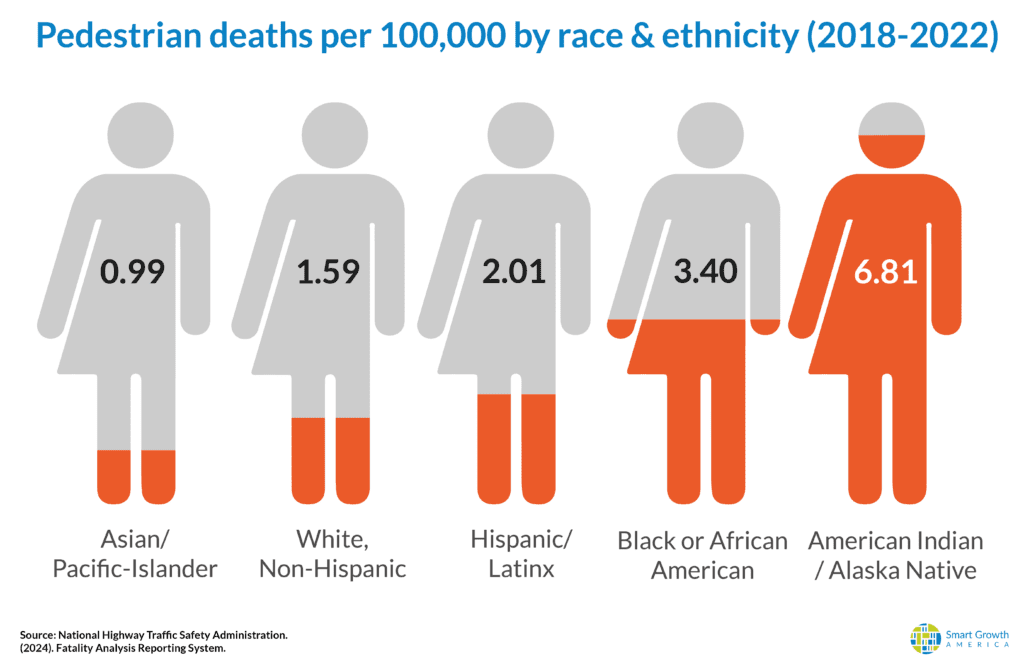
The latest Dangerous by Design report from Smart Growth America highlights a tragic inequity – American Indian and Alaska Native individuals are more than three times as likely to be killed while walking than the average American.
What will it take to reverse that? Over the last three years America Walks has been working directly with tribal representatives to understand the issues and develop strategies to make Native communities safer.
The underlying cause is not hard to find. Multi-lane high-speed roads located near homes, schools, businesses, and other destinations are a common landscape in Indian Country and in the urban and suburban areas of cities where Native Americans were forcibly relocated. Such roads, no matter where they are found, have proven to be the deadliest. The discriminatory impact on Native Americans is part of a pattern of harm. African American and Native American communities, those with lower incomes, seniors and those with disabilities also suffer from this exposure to roads designed to prioritize speed over safety.
To make it worse, states, counties or cities largely control road engineering decisions, even when the roads run through tribal communities. Any strategy to undo harm will therefore require not just cooperation amongst multiple governments, but also a willingness among those governments to challenge their own past practices.
We’ve now hosted two Policy Round Tables on Tribal Pedestrian Safety that have included tribal government leaders, planners and engineers, public health professionals, state and federal DOT officials, academic researchers, and advocates. Here are some of their strategic recommendations:
- UNDERSTAND HISTORY: Recognize that Native communities have experienced intentional harm, broken promises, and systemic racism. As a result, there is a lack of trust between tribal governments and U.S. federal, state, and county governments. Historical harms must be acknowledged and equity must be centered throughout the discussion.
- EDUCATE DECISION MAKERS: Develop technical guidance materials and a comprehensive training program on how to build roads and streets in tribal communities so that vehicles are operated at lower speeds.
- DEMONSTRATE and EVALUATE: Install “Quick-Build” demonstration gateway or roundabout projects which are designed to reduce traffic speeds in tribal communities (also known as “traffic calming pop-ups”).
- ELEVATE NATIVE VOICES: Recognize that each tribe is unique, give tribal communities greater control over road designs, and make the Policy Round Table on Tribal Pedestrian Safety an annual event.
With our partners, the Pueblo of Jemez, Cherokee Nation, the Northwest Tribal Technical Assistance Program, and the University of Montana School of Public and Community Health Science, we have now won funding from the National Safety Council to begin implementation of this strategy. In addition to planning and education the project will also include several non-permanent “Quick-Build” traffic calming projects (“gateways” or roundabouts, for example) installed in partnering communities. Finally, communication strategies will be implemented to encourage engagement by previous attendees and new officials, advocates, and community members to participate in additional National Policy Round Tables on Tribal Pedestrian Safety.
If you want to learn more about tribal pedestrian safety and our work, please consider joining our webinar, Pedestrian Fatalities in Indian Country: Responding to a Crisis on July 9th at 2:00 PM Eastern, or reach out to Ian Thomas (ian@americawalks.org) who is the America Walks staff lead on the project.